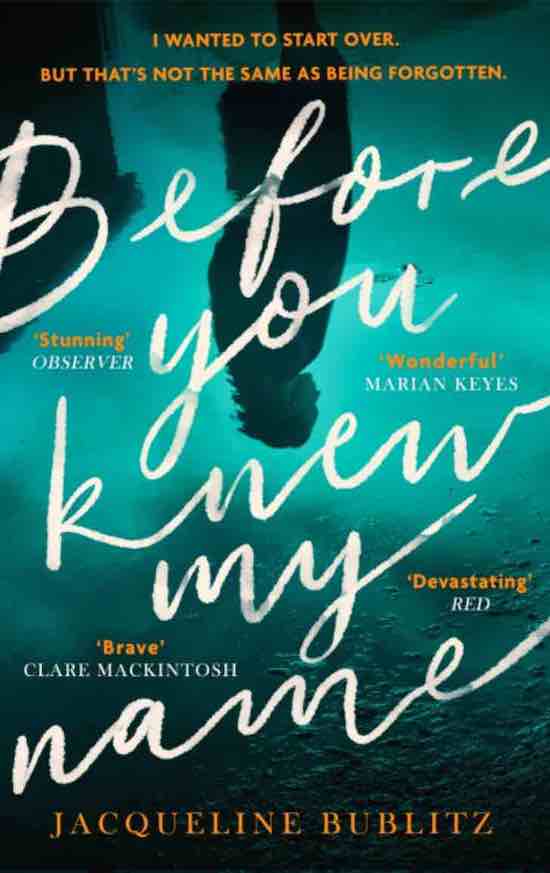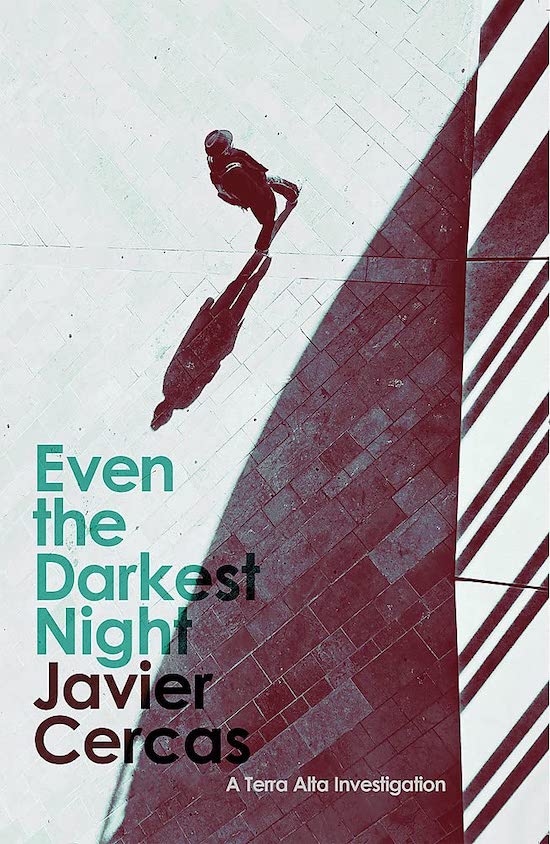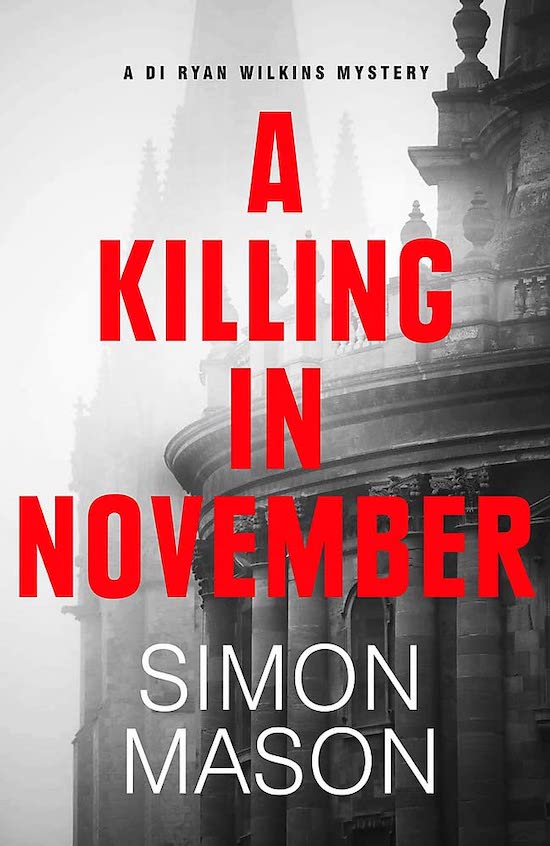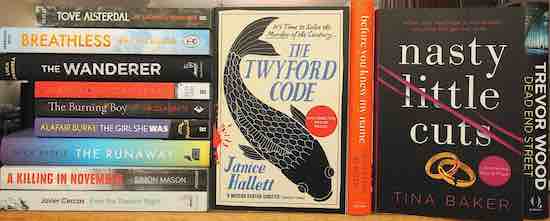Just like the rest of popular culture, crime fiction has its trends. Some rise and fall quickly, others prove more durable. This belated instalment of reviews features several that point in a direction one hopes fans of the genre will support sufficiently to see it transition from a passing fad to embedded, perennial preoccupation.
We may turn to fiction for diversion or distraction, but crime fiction fans are surely more than averagely open to art that draws on reality and which appears to tell us something new – or newly redirected – about the world we all inhabit. And, in that very real, painfully contested world, foregrounding the victim may never have felt more essential than it does right now.
We’ll start, then, with a book that’s by turns brutal and punishing, yet wrought with a depth of feeling and a breadth of empathy that almost literally takes the breath away, in large part because it seeks to understand things from the perspective of those who are affected by criminal behaviour, not just those who are tasked with solving crimes. Nasty Little Cuts is the second novel by TV soap critic and Celebrity Fit Club alumnus Tina Baker, but don’t come to it expecting pre-watershed punch-pulling. The action takes place over a handful of unbearably tense early-morning hours in a kitchen in a north London suburb, as a marriage and several lives teeter on the brink of calamity. How everyone got there is delivered not as flashbacks so much as shattered shards of memory stabbed into the narrative, instances of pain or revelation re-experienced by the protagonists inside their heads as they cling to the fraying threads of their lives.
Bit by bit, Baker peels back the skin to expose the blood, viscera and organs of a family in mortal crisis. Methodically and with great precision she unwinds the bandages to reveal the layers of pain. This is not just about the wounds but the tools used to make them – from toxic masculinity and social-media peer-pressure to the sexualisation of pre-teen entertainment – but Baker never stoops to suggesting that any one thing is to blame. Rather it’s the relentlessness, the constant repetition, the gradual accretion that turns these incremental pain centres into untreatable threats to life. They may each be nasty little cuts, but eventually they will sever the limb from the body.
Baker writes short and incisive chapters – and, within those, precisely calibrated and delicately balanced sentences comprised of high-definition images and intensely focused insights – that keep you charging through at breakneck pace but which leave her ideas and analyses stuck in your head for weeks afterwards. This is writing of real power, technically and emotionally. Tension is built superbly from the first page, a creeping sense of dread and unease rising to pulse-raising panic stations long before the denouement. She even manages to get in a few laughs. You’ll have to read it almost in real time: it’s too intense and involving to set aside for more than a few minutes. Crucially, and quite brilliantly, she takes on one of the very basics of the crime-fiction concept – that of a perpetrator and their prey – and turns the idea inside out. By the end you’re left feeling that everyone here is damaged, everyone has been hurt, everyone – to varying but significant degrees – is a victim.

We missed it in hardback last year, but the paperback publication round about now of Jacqueline Bublitz’s superb Before You Knew My Name ought to help put this wonderful book on more readers’ radars. Like Baker, Bublitz is writing from a refreshing and different perspective. Also like Baker, she succeeds brilliantly in placing the reader inside the minds of her fully drawn and entirely believable characters. And while her book joins the growing number that examine crime from the victim’s perspective, Bublitz’s take on it is uniquely daring: her narrator is dead.
That’s not to say that this is a ghost story per se, or even that a willing suspension of disbelief is required to get anything out of it. Incredibly, despite the fundamental conceit at its heart, this is a realist kind of a book, one that relies on the reader feeling that it takes place in the world we all inhabit and involves characters we will recognise to be living in our realm and experiencing the same things as we do.
It’s not The Sixth Sense or Wings of Desire in novel form, though there is one film with which it seems to share one or two strands of DNA: Sole Survivor, a 1970 TV movie starring Richard Basehart and William Shatner, in which the ghosts of airmen who died in a B-25 bomber crash watch as, seventeen years later, investigators find their lost aircraft and piece together what happened. Like that film, this book uses its supernatural elements not to distance the story from the day-to-day drudge but to embed it ever more deeply within the concrete and corporeal world.
The perspective of the murdered woman is compelling and indelible, her need to be rescued from a second savage attack – the erasure of her identity – a deft commentary on how women’s lives are routinely relegated in media representations and the collective social subconscious. At the same time, Bublitz has crafted a way-above-average whodunnit, a conceptually provocative thriller and a decidedly unusual, if not unique, kind of love story that is more than capable of both winning and breaking your heart.

The ghosts Wiley Cash writes about are metaphorical and psychological rather than actual manifestations of the deceased – though with its 1980s setting, you realise pretty early on that a great many of the characters will no longer be with us. When Ghosts Come Home is deceptive. There’s a gentility to proceedings, befitting the atmosphere of courtesy and politesse of the Cotton Belt, but prejudice and mendacity are never more than a mosquito’s bite beneath the surface. The narrative involves an abandoned stolen aircraft, a missing cargo of drugs, a dead Black man and a white supremacist running for election against a principled, proud and fundamentally decent incumbent sheriff. Cash may appear to be writing about forty years ago, but the themes couldn’t be more contemporary. Throughout, the prose is measured, clear, sharp – like a spring morning at altitude. This is a frequently beautiful and luxuriantly lyrical book about evil, hatred and the carcinogenic nature of bigotry; a tragedy and a warning, but by no means devoid of hope.
Another contemporary dispatch from a slightly distant but very much within-living-memory time comes in The Burning Boy, the last of a trilogy by Nicola White. You don’t need to have read the preceding volumes to get a very great deal out of this book. Indeed, the very limited amount of sketching-in of back story she offers just adds to the effect. The narrative exists in a world very like our own, but where homosexuality is illegal. This is not some terrifying dystopia, but Ireland in the 1980s. Like Cash, White refuses to overplay her incredibly strong hand, knowing that there is absolutely no need – simply letting the reader look over her shoulder as her characters navigate their environment is more than sufficient. And, again, there is no shortage of up-to-the-minute thematic resonance in this tale of corruption and deception.
There is something of the night about the events related in The Wanderer, too – the third book from Luca D’Andrea to be translated into English (by Katherine Gregor). In it, Tony Carcano, a successful author, is confronted by the daughter of a woman who drowned in a lake years earlier. Tony was present when her body was recovered. D’Andrea is interested and exercised by the points at which truth and fiction slide over one another, and there is a constant tug of war going on in this book between competing versions of reality. That the action – both the present-set uncovering and the years-distant conspiracy – takes place in the hidden valleys, forested hillsides and transitional edgelands of Tyrol, where Italy and Germany press against one another and disparate cultures compete to gain purchase on a remote and mountainous wilderness, is absolutely no accident. This is a shrewd, knowing, often ominous and frequently insidious book, by an author who delights in keeping his readers on their toes.
The mountains that provide the backdrop to Amy McCulloch’s Breathless are of a different magnitude. This is the perfect crime novel for anyone who is still picking their jaw off the floor after watching Nirmal Purja doing the impossible in last year’s Netflix hit documentary, 14 Peaks. McCulloch – a debut novelist and an accomplished Alpine climber to boot; she’s the youngest woman to reach the summit of Manaslu, where much of this book is set, and was at its base camp when Purja breezed through in September 2019 – gives the snowed-in country-house murder an irresistible makeover by setting her crime story in the “death zone”, above 8,000 metres, where most mortals require oxygen and umpteen layers of high-tog thermal protection to survive for more than a few seconds. The crime story may be secondary to the remarkable and engrossingly wrought setting, but no matter: you’ve never read a thriller like it, and one expects that where McCulloch has led, others will surely be inspired to follow.

A desolate landscape of a very different kind provides just as arresting a backdrop for Javier Cercas. In his sandblasted prose – via a translation by Anne McLean that finds words that intensify the desert – you can almost feel the Terra Alta heat prickling on your skin as detective Melchor Marín tries to solve a brutal double murder while also coming to terms with his complicated past. There’s a lot going on here, yet the reader is presented with a sense of space and austerity, the parched landscapes of this remote corner of Catalonia as much of a character in the narrative as Egdon Heath was in Thomas Hardy’s The Return of the Native. Better still: it’s the first of a new series.
It might seem glib to mention Tove Alsterdal’s We Know You Remember in the same breath, given it’s another work in a fine translation (by Alice Menzies), but the way Alsterdal conjures her similarly off-the-beaten-track wilderness – a wintry, tree-shrouded coastal region on the shores of the Gulf of Bothnia – shines a similarly angled light on one of the lesser-known parts of a different European country. Asterdal’s book won an award for the best Swedish crime novel of the year when it was originally published, and it’s not hard to see why. Her detective, Eira Sjödin, may conform with a few well-worn stereotypes as she confronts demons from the past that a new case digs up for her, but Alsterdal does not rely on giving her protagonist any preternatural investigatory superpowers – just an understanding of the human condition, an aptitude for solid police work, and the kind of patience and care that lesser authors might (rightfully) worry would lead to a dull read. Both these books benefit from their authors’ evident belief that we can learn as much from silence and absence as from a superfluity of action, detail and movement.
An out-of-season resort in New England gives Alafair Burke a similarly familiar-yet-offbeat backdrop for the twisty, time-shift narrative of The Girl She Was. There is a slippery quality to the book, perhaps emphasised in the mind of the reader by a couple of aspects of its publishing history: in the US it’s called Find Me, though there’s no real indication of why the different title was necessary; and, although it features Ellie Hatcher, a character Burke has written about several times before, this isn’t considered part of that ongoing series and instead is being marketed as a standalone. These facts, entirely irrelevant to the story, wind up wrapping the book in a fog of uncertainty that fits it like a glove. Burke keeps her plates full of memory loss, trauma and deception spinning to the end.
The first of these columns waxed lyrical about Trevor Wood’s wonderful creation, Jimmy Mullen. A Falklands War veteran who fell through society’s cracks and ended up sleeping rough in Newcastle, Mullen has more back story than your average serial crime-solver, and Dead End Street, the third book to feature him, would have to come in a pop-up version before he could leap any further off the page. As with its predecessors, the book masterfully interleaves its complicated crime story around acutely observed slices of life at the fraying edges of one of the wealthy west’s great cities; and, as satisfying and involving as the investigation is, it’s this world Wood builds and populates that stays with you. Sadly, according to the afterword, this is the last case Jimmy is going to be solving. Perhaps a Conan-Doyle-style letter-writing campaign can be mounted to persuade Wood to bring the chap his friends call Sherlock Homeless back again.

Another decidedly unusual detective turns up in A Killing In November, a debut crime novel from children’s, YA and adult dark comedy writer Simon Mason. If the setting inevitably puts you in mind of Morse, then imagine a younger version of the character partnered not with the doughty Geordie Lewis but by Eggsy from Mark Millar’s The Secret Service. Ryan Wilkins wears Burberry and backwards baseball hats, is mistaken for a criminal more often than he’s welcomed as a policeman, and delights in provoking his colleagues into revealing their class-based prejudices almost as much as he takes pride in unravelling a suspicious death in (of course) a storied but cash-strapped Oxford college. Mason has great fun with the fish-out-of-perceived-water set-up, and there are flashes of politically incorrect humour along similar lines to those deployed by Mick Herron when he gets Jackson Lamb to wind up the slow horses – though Mason skates on thinner ice by allowing the reader access to Wilkins’ internal monologues. It will be fascinating – and, on this evidence, hugely entertaining – to see how Wilkins develops in the promised future instalments.
Nick Petrie’s Peter Ash cleaves to a more familiar template. The powerful, principled military veteran who struggles to adapt on return to civvy street is a character type that feels very familiar even though it remains an exceptional archetype. But over the course of seven books Petrie has always tried to do something different with it. The Runaway stands as something of a lesson in both the up sides and the downs of Petrie’s approach. For a large chunk of the book, Ash is isolated from his support team – his girlfriend, investigative journalist June, and best friend, reformed criminal Lewis – and while there’s nothing particularly wrong with the story that unfolds or the way Petrie chooses to tell it, it does rather serve to emphasise that what makes this series sing is when Ash has to get over his loner tendencies and push back against the pressure he puts on himself to carry everyone else’s burdens, whether they ask him to or not.
And while we may not be saving the best to last in a column that has looked at so many brilliant books, there is plenty about Janice Hallett’s second novel that will make it stand out from even the most illustrious of crowds. Hallett’s debut, The Appeal, featured in the first of these columns last year, and after a bit of a shaky start in the promotional marketplace – early reviews were uniformly laudatory, but the way it was presented to book-buyers changed entirely between hardback and paperback editions, perhaps suggesting uncertainty at the publisher about what kind of book they were selling – soon established her as a fresh and innovative new voice.
The Twyford Code is clearly cut from similar cloth, but beyond its technological update to the epistolary format (something that gave The Appeal so much of its, erm, appeal), it probably has more elements that separate it from its predecessor than link back to it. In the earlier book, Hallett constructed her narrative out of written fragments: emails, text messages, and WhatsApp chat balloons read sequentially as a pair of junior lawyers tried to figure out what was going on from raw evidence. It was a daring conceit – the reader wasn’t even sure what crime had been committed until two thirds of the way through – and somewhat high risk: a story told entirely in dialogue presents challenges to a writer wanting to convey atmosphere and context as well as character.
This time around Hallett goes further, with the text purportedly produced by an algorithm that has automatically transcribed a series of smartphone voice memos. But there are errors in the transcription which may hold significance, and the story that is being related is elusive and chimeric. The novel relates a tale told by a former prisoner about a mysterious incident from his childhood, addressed to his estranged child. There are abandoned airfields, military secrets, an Enid Blyton-esque author and a powerful father-daughter relationship rattling around here, with Hallett relishing the allusions both as devices and signifiers that enrich the book as a piece of writing. By the end, you come to realise they are all part of the story, not merely gloss applied to it. Also, as you make your way through the book you begin to realise you’re being given a series of clues that will help you solve some undeclared puzzles, as ingenious and technically dazzling as the ones Alexandra Benedict set in The Christmas Murder Game, but each intrinsic to the story. The end result is just brilliant: a wholly involving, emotionally engaging, intellectually demanding yet pacy and propulsive read, which has the daring to admit to its many reference points (from Douglas Adams to Kit Williams) and is able to spin new gold out of them.


